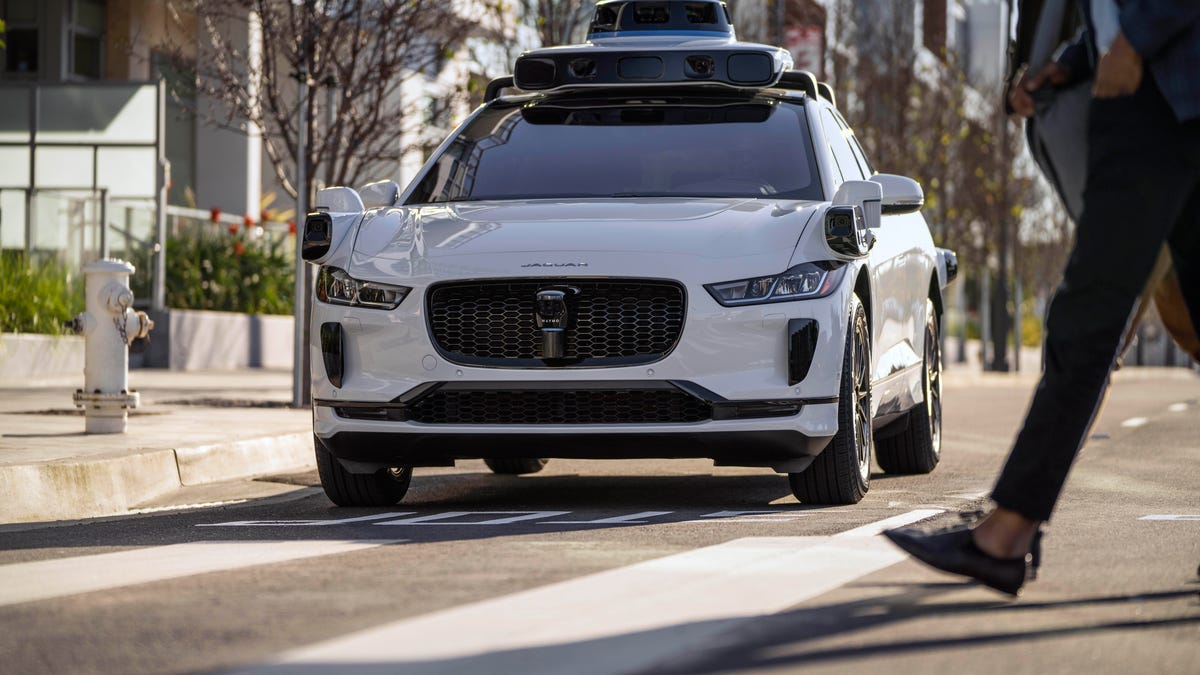Technologies
iOS 17 Should Steal These Android 14 Features
Apple is expected to announce the next iPhone OS at WWDC 2023.
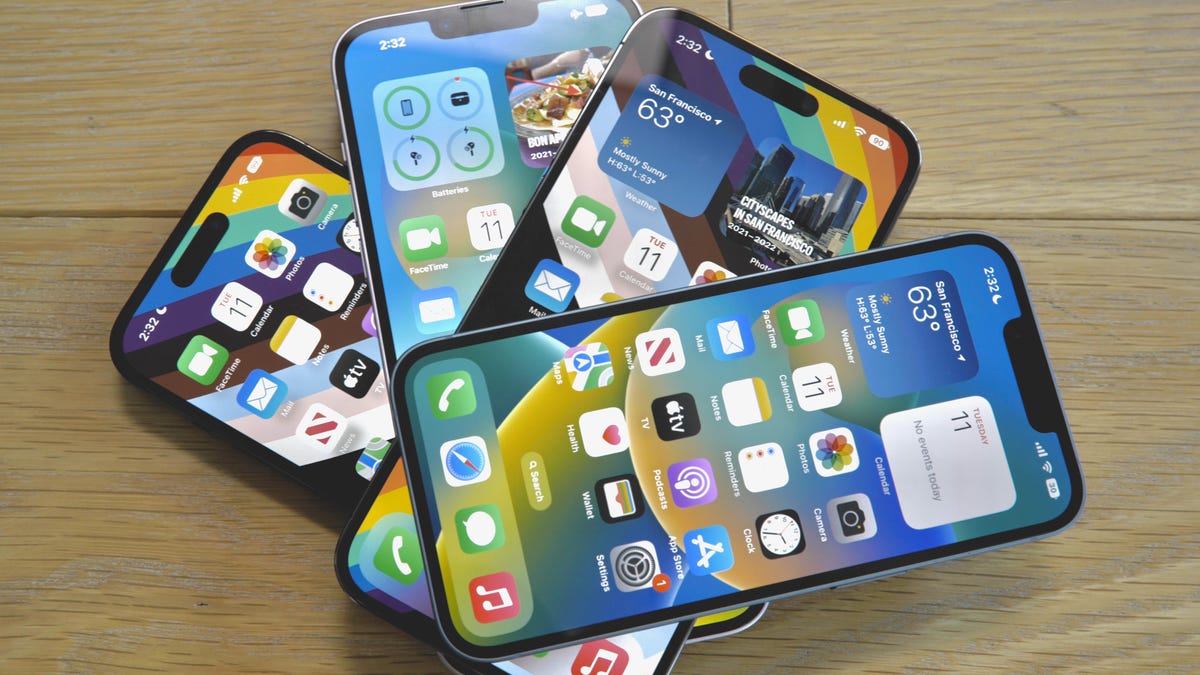
Apple’s Worldwide Developers Conference 2023 is set to begin on June 5, about a month after Google I/O 2023. Apple is expected to unveil iOS 17, the next version of its software for iPhones, at the event.
In the US, iPhones recently wrestled the crown away from Androids as the most popular smartphone, but this comes after more than a decade of Android dominance. And Android reigns in the global market, usually by wide margins. In South America, for example, Android represents about 88% of all smartphones, and iPhones trail with about 11%, according to the IT site SOS Support.
But for as long as Apple and Google have been fighting like Godzilla and King Kong for smartphone market superiority, they’ve also seemingly been stealing ideas from each other. For example, notification badges debuted on iPhones, and Androids had home screen widgets long before iPhones, according to Popular Science.
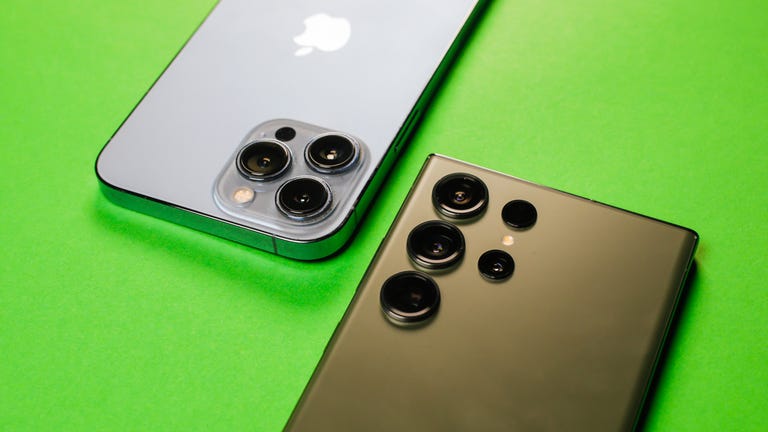
Apple and Android have seemingly been copying features from each other for years.
That back-and-forth continued with Android 14, as Android phones seemingly copied iPhones again with an updated Find My Device feature and added unknown tracker alerts. We don’t know what Apple has in store for iOS 17, but we think the company should incorporate some of the new Android features into the software.
Here are the new Android features I think Apple should include in iOS 17.
More lock screen customization options
Lock screen customization was one of the most substantial updates to land on iPhones when iOS 16 was released in September 2022. With iOS 17, I want to see Apple give iPhone users more customization options, like Google is doing with Android 14.
Android 14 will let users change the size and design of their lock screen’s clock — in addition to its font type and color — and the software lets users add shortcuts to their lock screen. Changing your lock screen clock is nice — you can already change the font and color of your iPhone’s lock screen clock — but I’d really like to see Apple add the ability to edit or add to the shortcuts on the lock screen.
I regularly use the flashlight shortcut, but I back-tap my iPhone to pull up the camera, so the camera shortcut doesn’t get used as much. Being able to change that shortcut to my Wallet app, or a search shortcut, would be great in iOS 17.
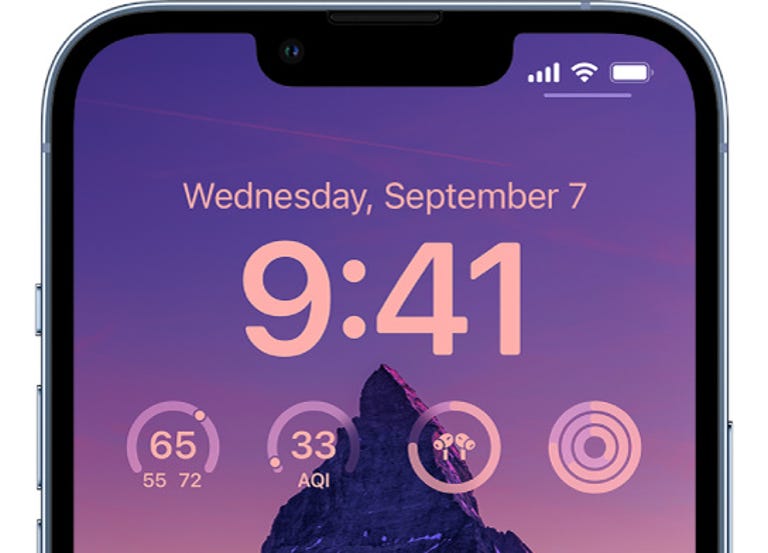
There are only four lock screen spaces for widgets in the current iOS.
It would also be nice if Apple added more widget spaces to the iPhone’s lock screen. With iOS 16, your iPhone has four grid spaces for widgets, and some widgets, like the Weather widget, take up two of those. It would be great if iOS 17 gave you at least four more grid spaces for widgets, giving you more ways to access your favorite apps.
AI-generated wallpapers
Android 14 will use artificial intelligence to let users create custom wallpapers. People will prompt their phone, which will use AI to generate a few wallpaper options. It would be great to see Apple roll out AI-generated wallpapers in iOS 17, but I’m not getting my hopes up.
While other companies have begun developing their own AI tools, Apple hasn’t made any public announcements about developing, or partnering with another company to produce, such tools.
«I do think it’s very important to be deliberate and thoughtful in how you approach these things,» Apple’s CEO Tim Cook said when asked about generative AI on the company’s earnings call.
It’s possible Apple will introduce more AI tools and functions in iOS 17, like AI-generated wallpapers, but I wouldn’t expect it. I’d bet Apple will integrate AI tools into functions most people already use, like Siri, first.
More emoji wallpaper customization options
Google announced at its I/O 2023 event that certain Pixel phones will let you create custom wallpapers using emojis, but this isn’t exclusive to Android 14. Users will be able to choose up to 14 emoji, the color of the background and the layout the emoji are set in. But Apple already brought this feature to iPhones.
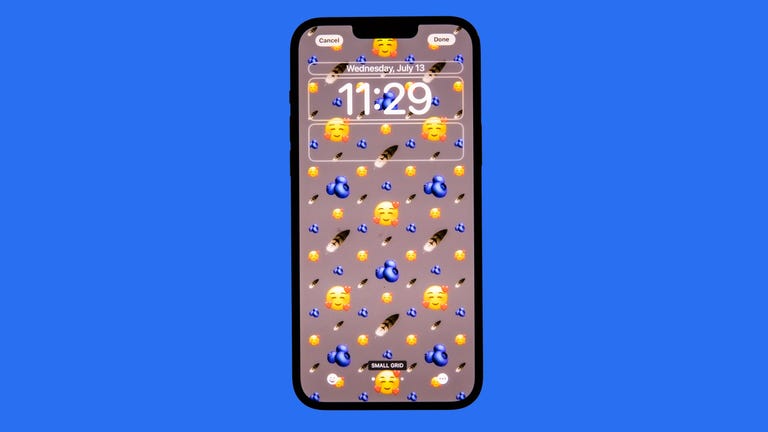
Emoji wallpapers are already available on iPhones.
To create a custom emoji wallpaper on your iPhone, go to Settings > Wallpaper > + Add New Wallpaper, and under the Emoji section are some premade emoji wallpapers. Tap any of these and you can edit what emoji are used, the layout and the color of the background. However, you can select only up to six emoji.
It would be fun if Apple allowed you to use more emoji and gave you more than six layout options in iOS 17 to further customize these wallpapers.
Cinematic wallpaper
Also not exclusive to Android 14, certain Pixel phones will let Android users create cinematic wallpapers. This feature will allow people to take a photo and give certain elements of the photo a depth effect. Once you’ve applied the effect, you can shift your Android device around and the wallpaper elements will shift around as well, making your wallpaper look three dimensional.
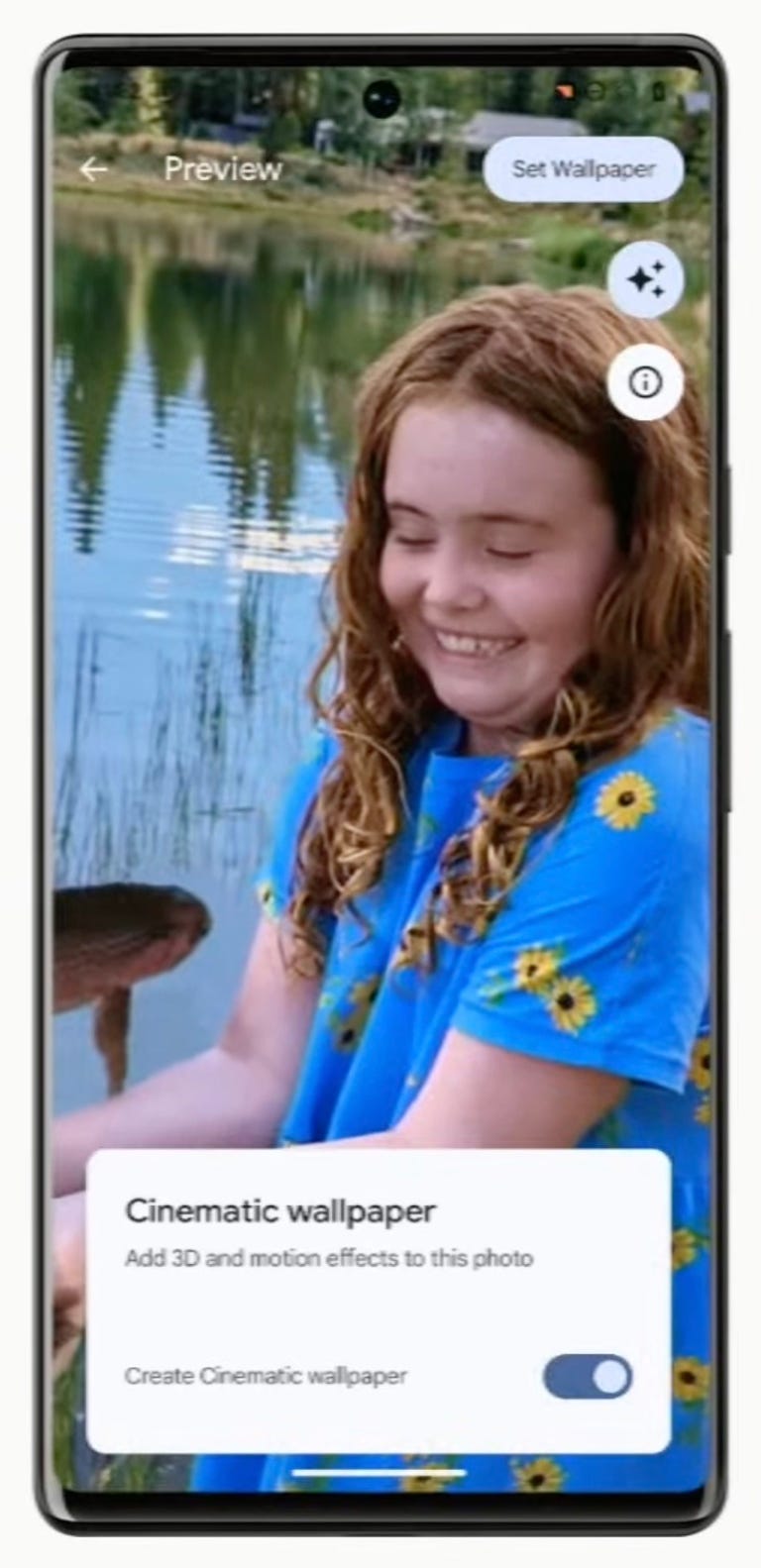
Cinematic wallpapers on Pixel devices will give certain wallpapers a three-dimensional look.
Apple introduced a similar lock screen feature in iOS 7, and this feature morphed into Perspective Zoom in some iOS 16 betas. However, the feature is no longer available in recent iOS 16 updates. Apple does let you apply a depth effect to your lock screen, but that just places your clock behind certain wallpaper elements. Enabling this also disables your lock screen widgets.
Cinematic wallpapers on your iPhone would be a nice touch to include in iOS 17, and they’d make some wallpapers on your home and lock screen really stand out. And if Apple doesn’t allow cinematic wallpapers in iOS 17, it would be great if the company at least allowed widgets to work on your lock screen when your depth effect was turned on.
For more iOS news, check out how iOS 17 could transform your iPhone into a smart home-esque display, what could be coming to your iPhone in iOS 16.6 and what new features you get in iOS 16.5.
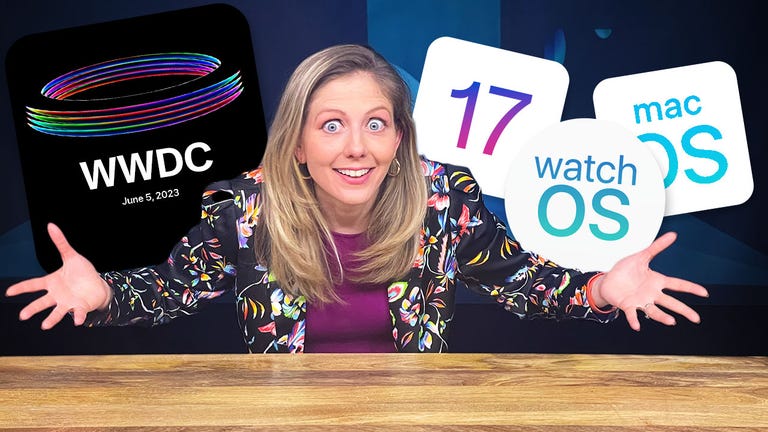
06:55
Technologies
Waymo Expands Its Robotaxi Fleet to Las Vegas, San Diego and Detroit. Everything to Know
Here’s everywhere the self-driving company operates now and where it’s heading soon.
Technologies
Apple Plans to Use a Custom Model of Google’s Gemini AI to Power Siri, Report Says
Apple reportedly chose Google over Anthropic for financial reasons.
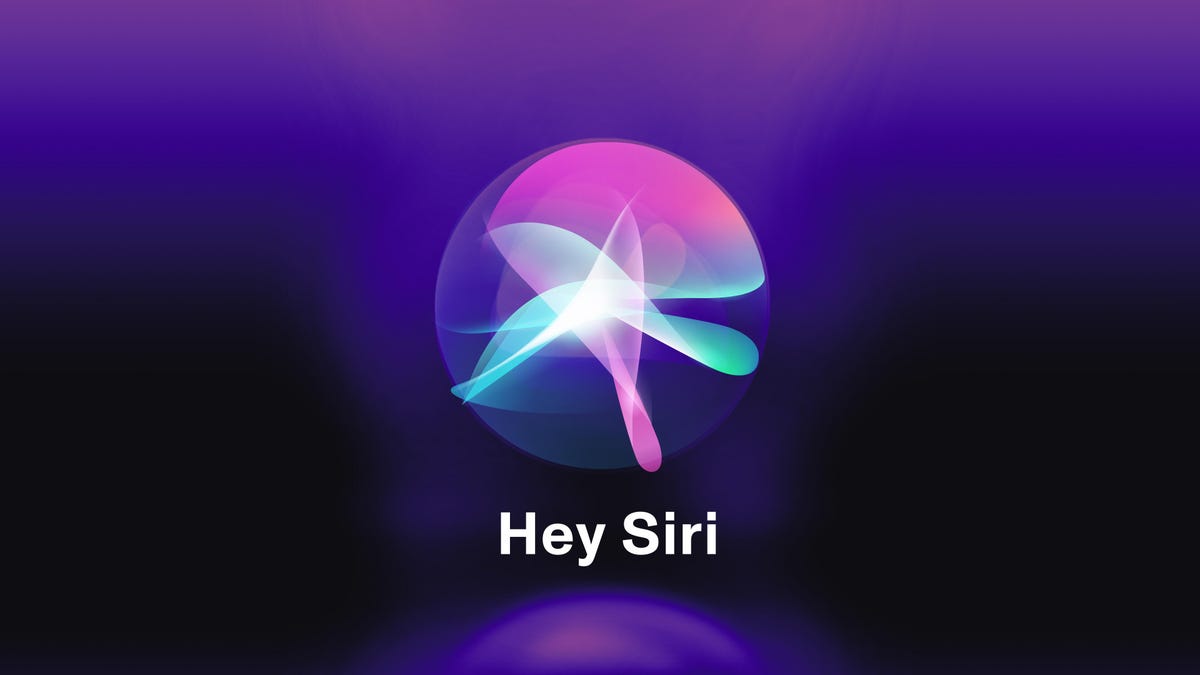
Apple is turning to Google to make a custom Gemini AI model to power the next version of its virtual assistant Siri for spring 2026, according to a report from Bloomberg’s Mark Gurman on Sunday.
According to the report, Apple was evaluating whether to use Google or AI competitor Anthropic for the next version of Siri. Gurman says Google offered a better financial deal. In an earlier Bloomberg report, he says Anthropic would have cost Apple $1.5 billion per year. The report doesn’t reveal Apple’s own financial offer.
Don’t miss any of our unbiased tech content and lab-based reviews. Add CNET as a preferred Google source.
This custom Gemini model will run on Apple’s private cloud compute servers. Apple’s own models will continue to run on devices for personal data, while Gemini would operate on servers for more complex tasks. Gurman also says that Apple won’t highlight Google’s involvement in the company’s marketing.
Representatives for Google, Apple and Anthropic did not immediately respond to requests for comment.
With major tech companies pivoting toward AI, Apple has largely been left behind. The tech company was slow to adopt AI and hasn’t developed AI models that are competitive. It instead turned to companies like OpenAI, the creator of ChatGPT, to help add generative capabilities on top of existing Apple systems.
Even then, the promise of a truly agentic Apple Intelligence has failed to materialize, although it has improved. Apple CEO Tim Cook also hasn’t ruled out the possibility of acquiring an AI company.
(Disclosure: Ziff Davis, CNET’s parent company, in April filed a lawsuit against OpenAI, alleging it infringed Ziff Davis copyrights in training and operating its AI systems.)
Apple also has a close relationship with Google. The search giant pays Apple $20 billion annually to remain the default search engine on Apple devices. It’s a relationship that nets Apple money and prevents it from building a competitor to Google Search, a claim Apple denies. This arrangement was an important factor in the Department of Justice’s case against Google, where a judge ruled that the company was operating an illegal monopoly.
Despite falling behind on AI, Apple is doing well financially. Last month, it surpassed a $4 trillion market cap.
Technologies
Today’s NYT Connections Hints, Answers and Help for Nov. 4, #877
Here are some hints and the answers for the NYT Connections puzzle for Nov. 4, #877.

Looking for the most recent Connections answers? Click here for today’s Connections hints, as well as our daily answers and hints for The New York Times Mini Crossword, Wordle, Connections: Sports Edition and Strands puzzles.
Today’s NYT Connections puzzle has a diverse mix of topics. They’re not too tough, but let’s hope you recognize your computer-related phrases. If you need help, you’re in the right place. Read on for clues and today’s Connections answers.
The Times now has a Connections Bot, like the one for Wordle. Go there after you play to receive a numeric score and to have the program analyze your answers. Players who are registered with the Times Games section can now nerd out by following their progress, including the number of puzzles completed, win rate, number of times they nabbed a perfect score and their win streak.
Read more: Hints, Tips and Strategies to Help You Win at NYT Connections Every Time
Hints for today’s Connections groups
Here are four hints for the groupings in today’s Connections puzzle, ranked from the easiest yellow group to the tough (and sometimes bizarre) purple group.
Yellow group hint: Point in the right direction.
Green group hint: Like a veneer, or veil.
Blue group hint: Like JPG.
Purple group hint: Musical instrument.
Answers for today’s Connections groups
Yellow group: Steer.
Green group: Thin layer.
Blue group: File extensions.
Purple group: ____ guitar.
Read more: Wordle Cheat Sheet: Here Are the Most Popular Letters Used in English Words
What are today’s Connections answers?
The yellow words in today’s Connections
The theme is steer. The four answers are direct, drive, guide and pilot.
The green words in today’s Connections
The theme is thin layer. The four answers are coat, film, leaf and sheet.
The blue words in today’s Connections
The theme is file extensions. The four answers are doc, mid, tiff and zip.
The purple words in today’s Connections
The theme is ____ guitar. The four answers are air, electric, rhythm and slide.
-

 Technologies3 года ago
Technologies3 года agoTech Companies Need to Be Held Accountable for Security, Experts Say
-

 Technologies3 года ago
Technologies3 года agoBest Handheld Game Console in 2023
-

 Technologies3 года ago
Technologies3 года agoTighten Up Your VR Game With the Best Head Straps for Quest 2
-

 Technologies4 года ago
Technologies4 года agoVerum, Wickr and Threema: next generation secured messengers
-

 Technologies4 года ago
Technologies4 года agoBlack Friday 2021: The best deals on TVs, headphones, kitchenware, and more
-

 Technologies4 года ago
Technologies4 года agoGoogle to require vaccinations as Silicon Valley rethinks return-to-office policies
-

 Technologies4 года ago
Technologies4 года agoOlivia Harlan Dekker for Verum Messenger
-

 Technologies4 года ago
Technologies4 года agoiPhone 13 event: How to watch Apple’s big announcement tomorrow

